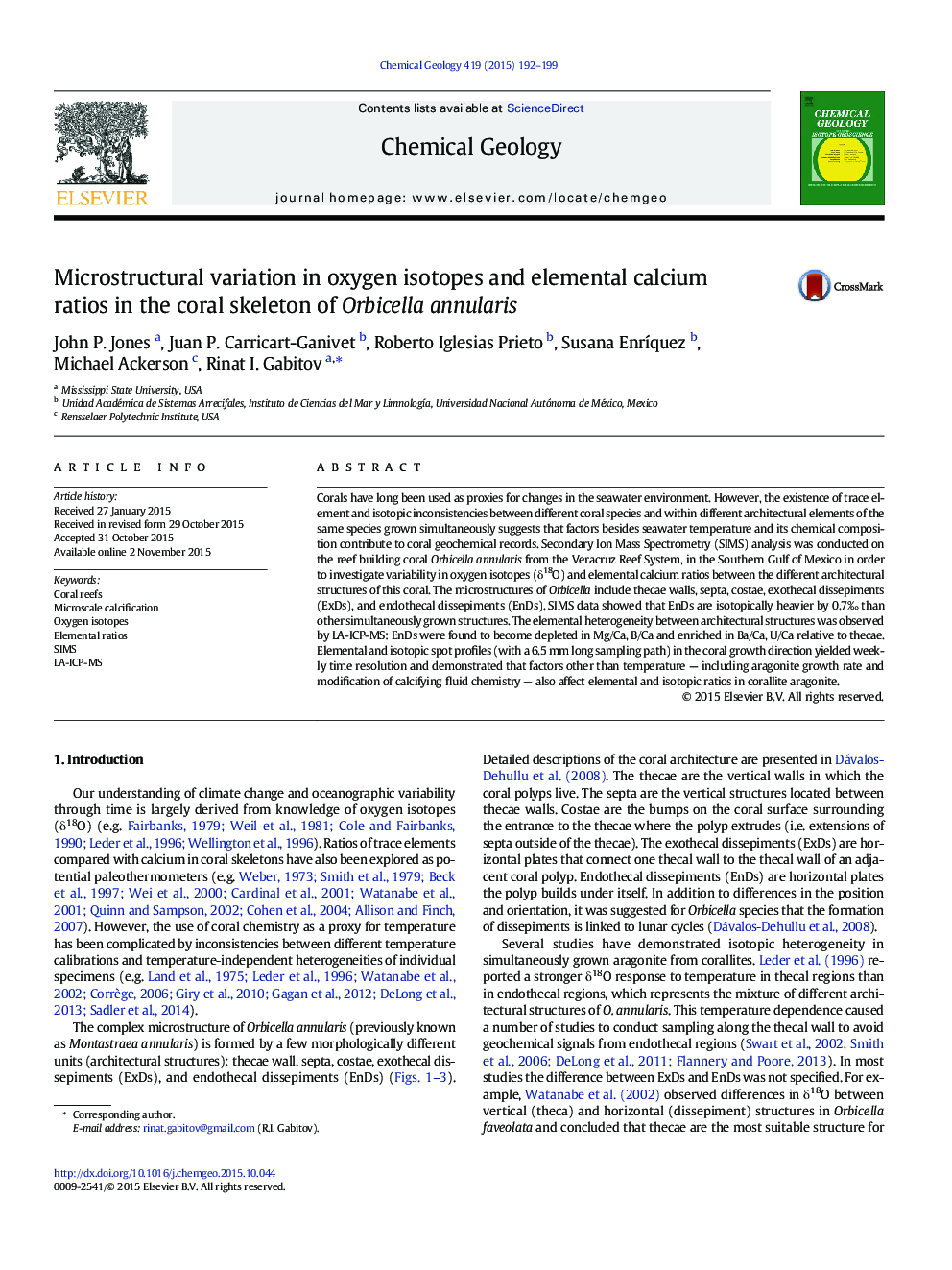| Article ID | Journal | Published Year | Pages | File Type |
|---|---|---|---|---|
| 4698412 | Chemical Geology | 2015 | 8 Pages |
•Architectural structures of Orbicella annularis were examined with SIMS and LA-ICP-MS.•Endothecal dissepiments are isotopically heavier than thecae.•Growth rate potentially explains isotopic and trace element heterogeneity in simultaneously grown structures.
Corals have long been used as proxies for changes in the seawater environment. However, the existence of trace element and isotopic inconsistencies between different coral species and within different architectural elements of the same species grown simultaneously suggests that factors besides seawater temperature and its chemical composition contribute to coral geochemical records. Secondary Ion Mass Spectrometry (SIMS) analysis was conducted on the reef building coral Orbicella annularis from the Veracruz Reef System, in the Southern Gulf of Mexico in order to investigate variability in oxygen isotopes (δ18O) and elemental calcium ratios between the different architectural structures of this coral. The microstructures of Orbicella include thecae walls, septa, costae, exothecal dissepiments (ExDs), and endothecal dissepiments (EnDs). SIMS data showed that EnDs are isotopically heavier by 0.7‰ than other simultaneously grown structures. The elemental heterogeneity between architectural structures was observed by LA-ICP-MS: EnDs were found to become depleted in Mg/Ca, B/Ca and enriched in Ba/Ca, U/Ca relative to thecae. Elemental and isotopic spot profiles (with a 6.5 mm long sampling path) in the coral growth direction yielded weekly time resolution and demonstrated that factors other than temperature — including aragonite growth rate and modification of calcifying fluid chemistry — also affect elemental and isotopic ratios in corallite aragonite.
